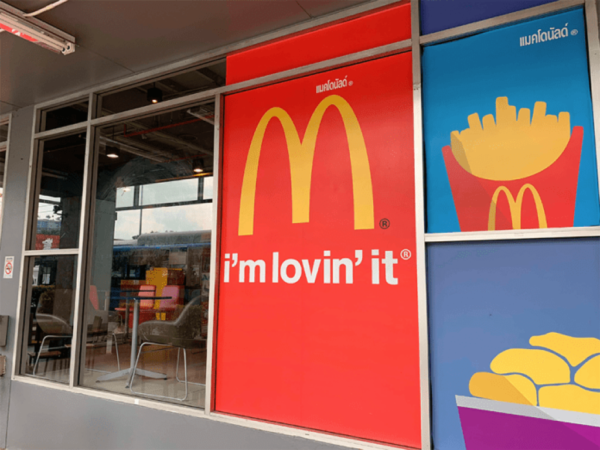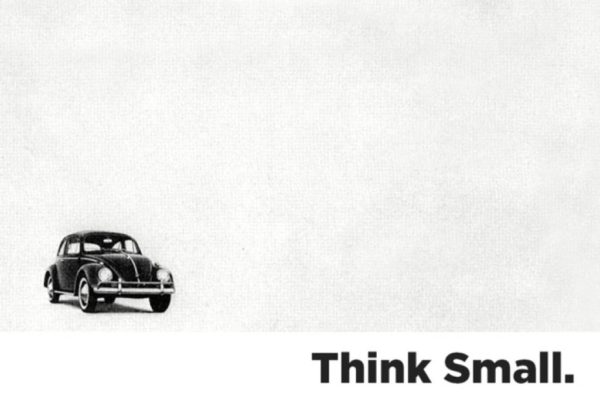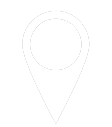6 tips for how to write advertising slogans that sell
“Slogan” is a bit of a catch-all term. For businesses it can mean a headline or a strapline. For a politician it can distil a policy or manifesto point into a quotable soundbite. Here, we’re going to be focusing on advertising slogans – those brief yet memorable lines that support a brand, product or campaign.
Firstly, beware of any advice about advertising slogans that starts by referencing Coca-cola, Nike and McDonalds. Most of us aren’t working with a global brand that has decades of heritage to draw upon. Although, if we do have any brand managers from those franchises reading along at this point, welcome!
But what about a developing brand struggling looking to define itself, establish recognition and differentiate itself from competitors? Or a brand that operates in a specific niche? Or a business-to-business brand? Clearly, we can’t all approach slogans in the same way the global brands do. Different challenges require different approaches. And that brings us to our first point:
1. Slogan examples: look for inspiration in all the right places.
For familiarity’s sake, a lot of the slogan examples mentioned in this blog will come from big brands. But when you’re looking to find a reference to help kickstart your creativity, maybe don’t look to Coca-cola, Nike and McDonalds.

Instead, look for a brand that was in a similar position to you and who made the leap you want to make.
You can keep it within your own industry if you like. Is there a competitor that currently outperforms you? What are they saying with their advertising slogans?
Alternatively, you can look further afield. Look to slogan examples from organisations with a similar level of brand recognition to yourself and see how they managed to lift their profile. If you’re unsure about how your brand is perceived, try conducting some market research.
2. Be realistic about your current brand status
On a similar note, it’s important to be aware of your brand status.
When big brands speak to their audience, what they say is accompanied by a torrent of prior knowledge, personal memories and cultural associations. That weight of collateral information helps to create a context around their message.
So when McDonalds says “I’m Lovin’It”, they’re talking about good times and burgers without even having to say it. Your mind fills in the blanks for them because of the brand associations that already exist.
When your brand can’t boast such strong associations, you’ll have to bear in mind the absence of context and be much more specific with your language.
3. Be aware of low-context versus high-context language in slogans

If you offer a niche product to a niche market, you may well share a common vocabulary with your target audience. In this situation, you may be able to use high-context language in your slogan writing.
High-context language can reference shared experiences and perceptions around the brand, product and culture.
Pros: When you have the luxury of being able to use this kind of language, it speaks directly to a target demographic, it’s full of character and fosters familiarity.
Cons: The flipside is that it may alienate large sections of the market, it can appear smug, cliquish and might become dated very quickly.
Slogan examples:
“HELLO MOTO”
– MOTOROLA, 2002.“GOOD THINGS COME TO THOSE WHO WAIT”
– GUINNESS 1996.
However, if you’re a new brand entering a broader market, you might not be speaking to a tightly grouped audience with shared cultural experiences or prior knowledge of your brand. In these circumstances, you can’t afford to be the least bit ambiguous, so low-context language is the way to go.
Low-context language doesn’t have the luxury of shared references and has to remain objective in order to be understood. To quote a low-context slogan, it has to do what it says on the tin.
Pros: The benefit of this approach is that it is most likely to result in a slogan that can be easily and universally understood. Often the best taglines are the most simple.
Cons: The downside is that you may have to sacrifice intimacy, personality, humour and quirkiness.
Slogan examples:
“PROBABLY THE BEST LAGER IN THE WORLD”
– CARLSBERG, 1973.“HAVE A BREAK, HAVE A KIT KAT”
– KIT KAT, 1958.
4. Choose from these three slogan approaches
When you need a slogan and you’re faced with a blank page, choose one of these three types of slogan to make sure you’re setting off along the right path.
Type 1: What it is.
For example:
“EFFECTIVE SIDE IMPACT PROTECTION”
Pros: This type of slogan works because it is straight forward. Defensible, stark, low-context/high-comprehension – it’s a great place to start when your brand or campaign is new.
Cons: A disadvantage is that this approach doesn’t leave a lot of room to inject characters. Your slogan may appear a bit dry and lacking in emotional appeal.
Type 2: What it does.
For example:
“REDUCES SIDE IMPACT INJURIES BY 70%”
Pros: This evidence-based approach is effective when it uses facts or stats to demonstrate a USP
Cons: When there’s only time to focus on a single USP, you may not get to tell the whole story.
Type 3: What it means.
For example:
“SECURITY AND PEACE OF MIND FOR YOU AND YOUR FAMILY”
Pros: This approach gets its power from focusing on benefits and appealing to emotions.
Cons: This approach can fall down if the language lacks meaning through because its too vague, or when the audience would rather see some cold hard facts and evidence.
So before letting your imagination run wild, establish which of these three types of slogan your campaign needs. Only then can you restrict your ideas to ones that will solve the specific challenges you face.
5. Use a USP as a slogan
One way to create slogans for advertising is to single out one of your USPs (Unique Selling Points) and simply use that. This tactic was used with enormous success by pioneering British copywriter, David Ogilvy. If you’re into copywriting, Ogilvy is basically The Beatles, smashing paradigms, revolutionising approaches, and conquering America in the process.
It was mentioned to him on a tour of the Dove factory in Indiana that their soap was in fact made from “one quarter moisturising cream”. Ogilvy took that simple fact and turned it into one of the most enduring product slogans in advertising history.
In 1957, under similar circumstances at the Rolls Royce factory, Ogilvy learned that, at 60mph, the loudest noise in their new model came from the clock. This hugely successful ad campaign was born:

It may seem simple to us today, but by identifying what makes you special and making that fact the hero of your ad campaign, you can create and own exclusive and inimitable advertising slogans.
6. Take a trending phrase and make it your own
An early example of this approach came in 1959 when Volkswagen flipped the popular phrase “Think Big”, using “Think Small” as the slogan for their Beetle model. The cheeky, self-deprecating tone of the phrase chimed perfectly with the modest motor, and the result was named the best ad campaign of the 20th century by Ad Age.

More recently, Domino’s Pizza coined the phrase, “Joy Of Missing Out” in a campaign that subverts the popular “FOMO” hashtag.
Using an existing phrase is a great short cut to context, because taps into a shared cultural phenomenon. It’s instantly memorable because the source material is already well known. Plus, it demonstrates humour, which is always a winner.
Distilling it down
Admittedly, that was a lot of words about writing very few words. But when it comes to distilling the essence of what you offer down to one line, maybe even just two words, it’s worth investing some serious time and effort into getting it right.
Above all, remember that your brand may not have the luxury to be abstract or obscure with its advertising slogans. Keep it simple and specific, grab attention, appeal to emotions and focus on the benefits you bring. If you can tick all of those boxes, you’ll have a slogan that sells.
Whether you’re new slogan will be accompanying your brand logo on business stationery, or written large across a huge printed banner, Headline Printers can help you put your message out there with print.






